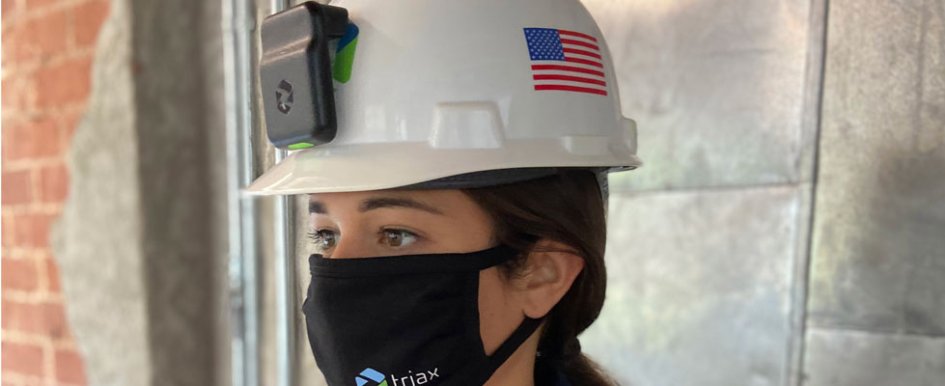
The No. 1 priority of Gilbane Building Company has always been the safety of its workers, and at no time has that been more critical than during the past year. COVID-19 has impacted how and when work gets done — ushering in a new level of safety protocols. While most of these were in response to the immediate threat of COVID-19, these new practices may also be helpful in managing contagion of the yearly flu and many of them will continue for the foreseeable future.
Gilbane turned to the latest Internet of Things (IoT) wearables to support its efforts in keeping workers safe. It also found creative ways to implement standard best practices to overcome jobsite limitations.
The following are six safety protocols Gilbane has found effective in keeping its workers safe during the pandemic.
1. Reduce the number of people working together
Some of the practices the company implemented before the pandemic, such as using modular construction and just-in-time delivery to expedite projects and limit the number of people working together at a time. During the pandemic, Gilbane has been conducting more detailed planning than usual to determine who needs to be on site, as well as when and where, so it can assign workers to specific shifts and zones to minimize interactions. By leveraging automated check-in functionality with turnstiles or wearable technology, Gilbane has been able to avoid clusters around entry and egress points. Specific location-based IoT sensors can also be used to monitor where workers congregate to better maintain capacity limits in specific zones.
2. Using sensors to alert workers when they get too close
Even when contact is reduced as much as possible, tradespeople still need to work in close proximity, and social distancing is a proven way to minimize the spread of COVID-19. To enhance social distancing efforts, Gilbane has deployed Proximity Trace from Triax Technologies to provide real-time feedback through audio and visual alerts when workers get too close to each other.
3. Be inventive in following protocols
Handwashing, temperature checks and mask wearing are key methods of controlling the spread of COVID-19. Increasing access to handwashing stations and the availability of hand sanitizers at project sites has been important, especially where running water may not be readily available throughout the jobsite. The plumbers on one jobsite rigged up a portable tankless warm water unit by attaching spigots to landscaping bins and adding wheels.
4. Change the attitude about calling in sick
In the construction environment, some workers may feel that calling in sick is a stigma, regardless of how ill they feel. Gilbane has been tackling this mindset head on by educating workers about the importance of taking sick days when they feel ill, both for their coworker’s health and safety as well as their own.
5. Automate contact tracing
In the event that someone does test positive for the coronavirus, it’s critical to find out who else might be exposed as quickly as possible. Relying on memory to figure out who might have had close contacts with is not an effective method. Instead, this process can be automated so the information on potential exposures can be available as soon as possible. Using the data captured from Proximity Trace wearables, Gilbane is able to immediately identify who had close interactions with the infected person and the duration of each interaction, so it can manage the situation effectively and prevent further spread. Acting quickly and accurately could avoid large-scale shutdowns.
6. Proactively identify risky behaviors
While we are all creatures of habit, COVID-19 has necessitated that we step back and consider which practices make sense in today’s environment. For example, a safety officer at one of Gilbane’s sites ran a report on close contact interactions to identify potential areas of risk and noticed that every day the site supervisor was meeting with foremen across the site. Realizing the risk of exposure, most of these face-to-face meetings are now conducted by phone or outside with social distancing protocols.
Communication Is Key
When dealing with a pandemic, communication is essential. Gilbane established a COVID-19 Response Team, which closely monitors up-to-date recommendations from the Centers for Disease Control & Prevention (CDC) and other government and regulatory bodies to keep up with the latest guidelines. The company is continually sharing that information and providing guidance to all trades as well as the management team in a variety of ways, through Safety Stand-Downs, the company intranet, conference calls, emails and more. Working safely through a pandemic takes a village, and it requires the education, training and involvement of everyone on the site, supported by the teamwork, caring, dedication and discipline that
are hallmarks of Gilbane’s culture.
